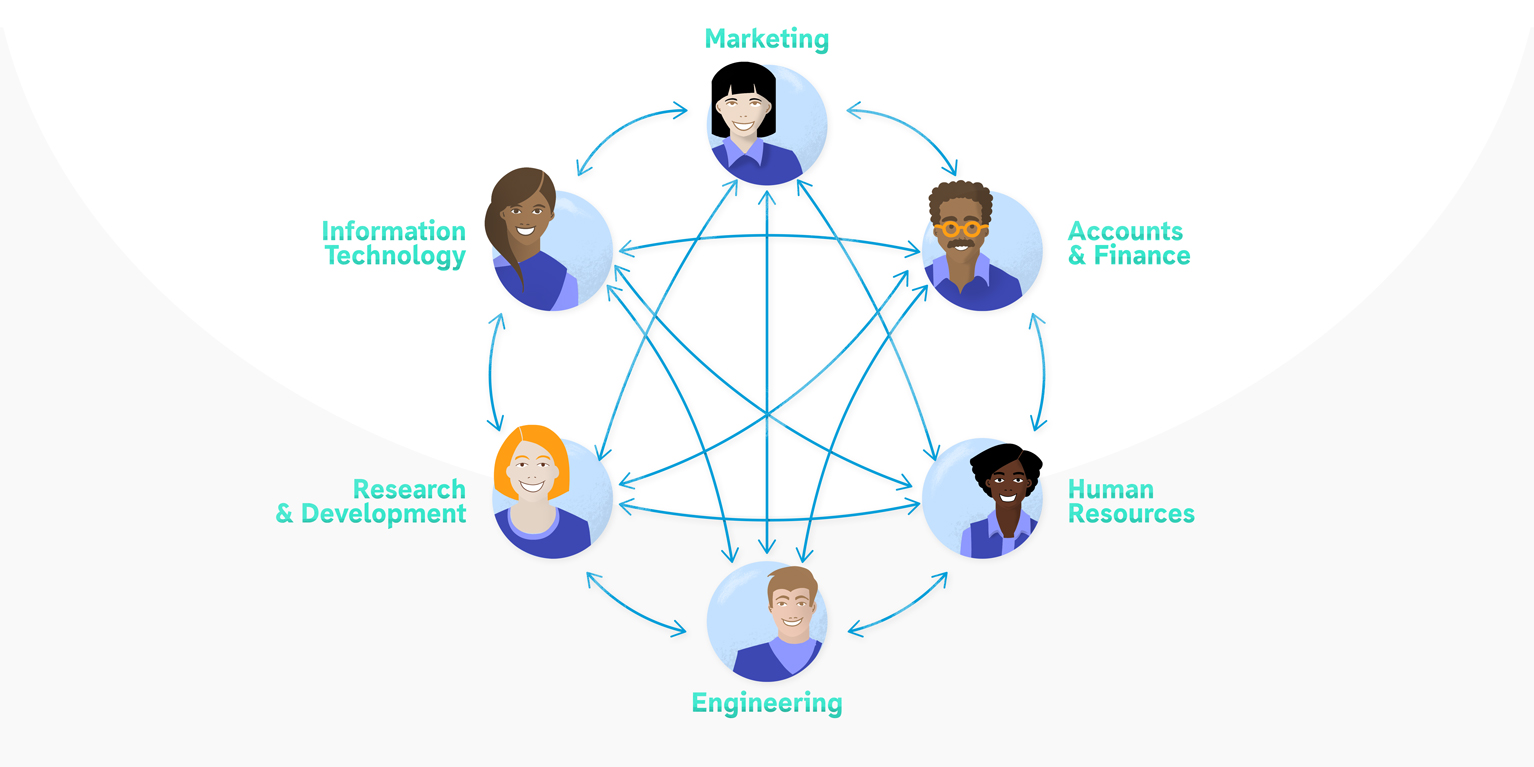Decentralization: A New Era of Business Leadership
If your organization has thrived – or even just survived – over the last two years, it is likely because you have learned to embrace two fundamental headwinds: disruption and reinvention. No matter your industry, the pandemic and subsequent lockdowns have changed the way companies operate. Those changes are especially evident in leadership, where an evolution in the way employees work, coupled with a shifting change in customer values and expectations, have created the need for a new era of governance.
A tale of two extremes
Top-down leadership has been the way for centuries. Namely, a small number of executives manage the direction of the organization and all or most of the decision making, while the rest of the team (in the most extreme cases) is expected only to execute the plan. In an era where questioning authority or the status quo is often the de facto response, top-down focused leadership can feel antiquated and needlessly dictatorial.
Top-down management has its place, however. It provides a definitive chain of command and allows information to flow in more direct, predictable patterns. Decisions are often made more quickly and it can be easier to control the brand identity of the organization, especially to the outside world.
On the flip side, top down management can also stifle creativity and innovation, favoring group think mentality over creating pathways for individuals to step out of traditional roles. It also puts an inordinate amount of strain on leaders, especially as an organization grows.
In recent years bottom-up management has gained a foothold as an antidote to frustrations with top-down leadership. Bottom-up encourages individuals to work more autonomously, and, rather than relying on structure, rules or authority, success is measured in achieving results. Employees are responsible for funneling feedback up the chain, rather than receiving it from leaders.
The bottom-up method certainly paves the way for greater innovation, and it opens the door for more collaboration and feedback, but, it too, can prove limiting. As the saying goes, too many cooks in the kitchen and suddenly you’re dealing with disorganization that can pull your company’s focus away from its own mission and broader business goals. Additionally, it’s hard to know where the buck stops in a bottom-up organization, making accountability a challenge, especially when things go wrong.
The best of both worlds
The pandemic taught us that a new style of leadership is worth considering, one that has the capability to take advantage of the pros of both top-down and bottom-up management, while limiting some of the cons. Decentralized leadership allows for decision making to be delegated by top level executives to senior, mid and lower level managers within the organization. It alleviates the need for senior management to own all decisions within a company—especially useful for large organizations or those that are spread out across multiple locations or geographies.
Decentralized leadership gives authority to individuals who are likely closer to the information necessary to make valuable decisions for the company, but unlike the bottom-up approach, it keeps decision making somewhat centralized and continues a clear line of authority.
It can be hard to know exactly which leadership style is most effective for your organization, and in truth, it can evolve over time. Taking a decentralized approach offers greater flexibility to lean top-down or bottom-up for certain projects or within certain teams when necessary.
By empowering middle management to make decisions, you create greater self-sufficiency within teams while also promoting greater accountability. Managers are motivated by a greater feeling of trust in their own instincts and abilities and you inevitably help to build future leaders within the organization.
By creating environments where individual employees can work closely together with empowered decision makers, work is often done faster and with greater efficiency. This level of agility makes it easier to absorb the winds of change that can wreak havoc when they unexpectedly blow through a company, unless you’ve created a culture where new ideas are heard and can be implemented quickly. The close alignment with decision makers that comes from decentralized leadership often results in fewer mistakes, and inevitably, improves employee morale.
Is decentralized leadership right for your organization?
Decentralization doesn’t just happen because someone, somewhere, makes a decision to change the way the organization is run. Rather, it’s a conscious choice to align the corporate culture in a way where decentralized decision making can flourish.
If this method of leadership sounds beneficial for your organization but you’re not sure where to start, let us help. The team at StrategyBlocks can create a powerful, visual approach to strategy that makes it easy for department heads or team leads to assign, track and manage projects and initiatives, without senior leadership losing any visibility into progress and results. Contact us today and let us share a free demo suited to the needs of your company.
Want to know more about decentralization as a leadership solution? Check out this additional reading:
- What’s most needed from managers now, Strategy+Business
- 3 Reasons to Decentralize Your Leadership Team, Inc Magazine
- When to Decentralize Decision Making, and When Not To, Harvard Business Review




Leave A Comment